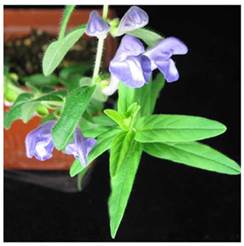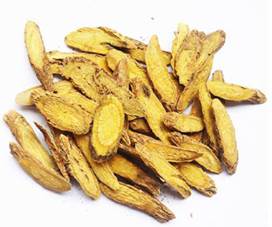科学家在黄芩中发具有抗癌作用的物质
来源:《Science Advances》
作者:Qing Zhao等
时间:2016-04-19



黄芩是一种传统的中药药材,常常用于治疗与肝脏、肺部有关的疾病。
科学家已经发现这种植物具有一种特殊的方式产生具有抗癌特性的化学物质。
研究者说道,这个发现向制造新的药物迈进了一大步。
该研究的主要研究者为英国诺维奇John Innes中心的Cathie Martin教授。研究结果发表在近期的《Science Advances》期刊。
研究者与中国科学家共同研究,认为可能黄芩合成的某种黄酮物质具有抗癌作作用。
黄酮在植物界广泛存在,黄酮使得植物显示出鲜艳的蓝色花朵。
“了解黄芩合成机制,有助于我们大量生产这种特殊的黄酮,用于更广泛的医学研究和临床实践,”Martin教授说道。
“这种药物在中医中已经有几千年的使用历史,因此,这种物质可能会很高效地应用于现代医学。”
以往有实验研究显示,黄酮具有抗癌特性,这些发现让人们相信,这种药物在将来的某一天可以有效地应用于癌症治疗。
英国癌症研究中心的Alan Worsley教授对这项研究发表了评论,说道:“这项研究回答了一个非常有趣的生物学问题:植物是如何能够产生特殊的分子。但是这项研究并没有探索这些分子是否可以用于治疗癌症。”
“该研究探索了这种物质是如何在自然界中合成的,了解这个问题有助于科学家在实验室合成更多的这种物质用于应用方面的研究。”
这种草药是中国的特有植物。中医将黄芩的根与其他植物组合,用于治疗发热和其他疾病。
这项研究激发了科学家对中药的研究兴趣。(来源:生物360)
A specialized flavone biosynthetic pathway has evolved in the medicinal plant, Scutellaria baicalensis
Abstract Wogonin and baicalein are bioactive flavones in the popular Chinese herbal remedy Huang-Qin (Scutellaria baicalensis Georgi). These specialized flavones lack a 4′-hydroxyl group on the B ring (4′-deoxyflavones) and induce apoptosis in a wide spectrum of human tumor cells in vitro and inhibit tumor growth in vivo in different mouse tumor models. Root-specific flavones (RSFs) from Scutellaria have a variety of reported additional beneficial effects including antioxidant and antiviral properties. We describe the characterization of a new pathway for the synthesis of these compounds, in which pinocembrin (a 4′-deoxyflavanone) serves as a key intermediate. Although two genes encoding flavone synthase II (FNSII) are expressed in the roots of S. baicalensis, FNSII-1 has broad specificity for flavanones as substrates, whereas FNSII-2 is specific for pinocembrin. FNSII-2 is responsible for the synthesis of 4′-deoxyRSFs, such as chrysin and wogonin, wogonoside, baicalein, and baicalin, which are synthesized from chrysin. A gene encoding a cinnamic acid–specific coenzyme A ligase (SbCLL-7), which is highly expressed in roots, is required for the synthesis of RSFs by FNSII-2, as demonstrated by gene silencing. A specific isoform of chalcone synthase (SbCHS-2) that is highly expressed in roots producing RSFs is also required for the synthesis of chrysin. Our studies reveal a recently evolved pathway for biosynthesis of specific, bioactive 4′-deoxyflavones in the roots of S. baicalensis.
原文链接:http://advances.sciencemag.org/content/advances/2/4/e1501780.full.pdf




